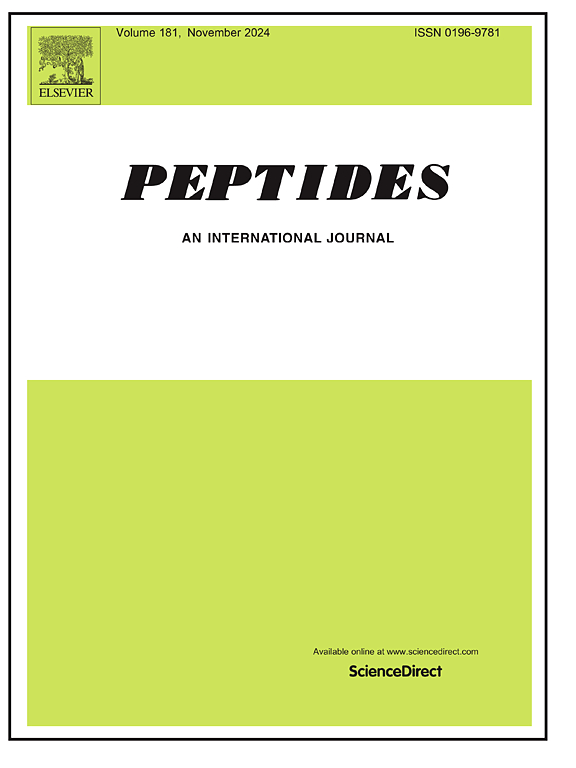Liraglutide suppresses ferroptosis by upregulation NRF2 in type 2 diabetic cardiomyopathy
IF 2.9
4区 医学
Q3 BIOCHEMISTRY & MOLECULAR BIOLOGY
引用次数: 0
Abstract
Recent research indicates that inhibiting myocardial ferroptosis may help alleviate diabetic cardiomyopathy (DCM). Liraglutide (LIRA), a glucagon-like peptide-1 receptor agonist, has been shown to offer cardiovascular protective effects. Nevertheless, the specific role of LIRA and its relationship with myocardial ferroptosis in type 2 DCM is still not well understood. An in vivo model of type 2 diabetes mellitus (T2DM) was created using spontaneous diabetes Goto-Kakizaki (GK) rats. These rats received LIRA at a dose of 200 μg/kg/day through daily subcutaneous injections for 8 weeks. In vitro experiments involved treating H9C2 cells with different concentrations of glucose, LIRA, siRNA-Nrf2, Fer-1, or their combinations. The results demonstrated that LIRA enhanced glucose metabolism, improved cardiac remodeling and function, reduced lipid peroxidation, and mitigated myocardial ferroptosis in diabetic rats. Additionally, LIRA was found to increase the levels of proteins associated with ferroptosis, such as Cyto-NRF2, Nu-NRF2, PTGS2, FTH-1, and GPX4 in DCM. In vitro, high glucose levels intensified the production of lipid reactive oxygen species (ROS) and lipid peroxidation, diminished mitochondrial mass, and lowered the levels of ferroptosis-related proteins, ultimately triggering ferroptosis. Notably, these detrimental effects were mitigated by LIRA treatment. Overall, these results indicate that LIRA may serve as a valuable therapeutic option for addressing myocardial ferroptosis by promoting NRF2 expression in type 2 DCM.
利拉鲁肽通过上调2型糖尿病心肌病患者的NRF2抑制铁下垂
最近的研究表明,抑制心肌铁下垂可能有助于减轻糖尿病性心肌病(DCM)。利拉鲁肽(Liraglutide, LIRA)是一种胰高血糖素样肽-1受体激动剂,已被证明具有心血管保护作用。然而,LIRA在2型DCM中的具体作用及其与心肌铁下垂的关系尚不清楚。以自发性糖尿病大鼠Goto-Kakizaki (GK)建立2型糖尿病(T2DM)体内模型。这些大鼠每天皮下注射200 μg/kg/天的LIRA,持续8周。体外实验包括用不同浓度的葡萄糖、LIRA、siRNA-Nrf2、Fer-1或它们的组合处理H9C2细胞。结果表明,LIRA可增强糖尿病大鼠的糖代谢,改善心脏重塑和功能,减少脂质过氧化,减轻心肌下垂。此外,研究发现LIRA可增加DCM中与铁下垂相关的蛋白水平,如Cyto-NRF2、Nu-NRF2、PTGS2、FTH-1和GPX4。在体外实验中,高葡萄糖水平增强了脂质活性氧(ROS)的产生和脂质过氧化,减少了线粒体质量,降低了铁中毒相关蛋白的水平,最终引发铁中毒。值得注意的是,LIRA治疗减轻了这些有害影响。总之,这些结果表明,LIRA可能通过促进NRF2在2型DCM中的表达,作为解决心肌铁下垂的有价值的治疗选择。
本文章由计算机程序翻译,如有差异,请以英文原文为准。
求助全文
约1分钟内获得全文
求助全文
来源期刊

Peptides
医学-生化与分子生物学
CiteScore
6.40
自引率
6.70%
发文量
130
审稿时长
28 days
期刊介绍:
Peptides is an international journal presenting original contributions on the biochemistry, physiology and pharmacology of biological active peptides, as well as their functions that relate to gastroenterology, endocrinology, and behavioral effects.
Peptides emphasizes all aspects of high profile peptide research in mammals and non-mammalian vertebrates. Special consideration can be given to plants and invertebrates. Submission of articles with clinical relevance is particularly encouraged.
 求助内容:
求助内容: 应助结果提醒方式:
应助结果提醒方式:


